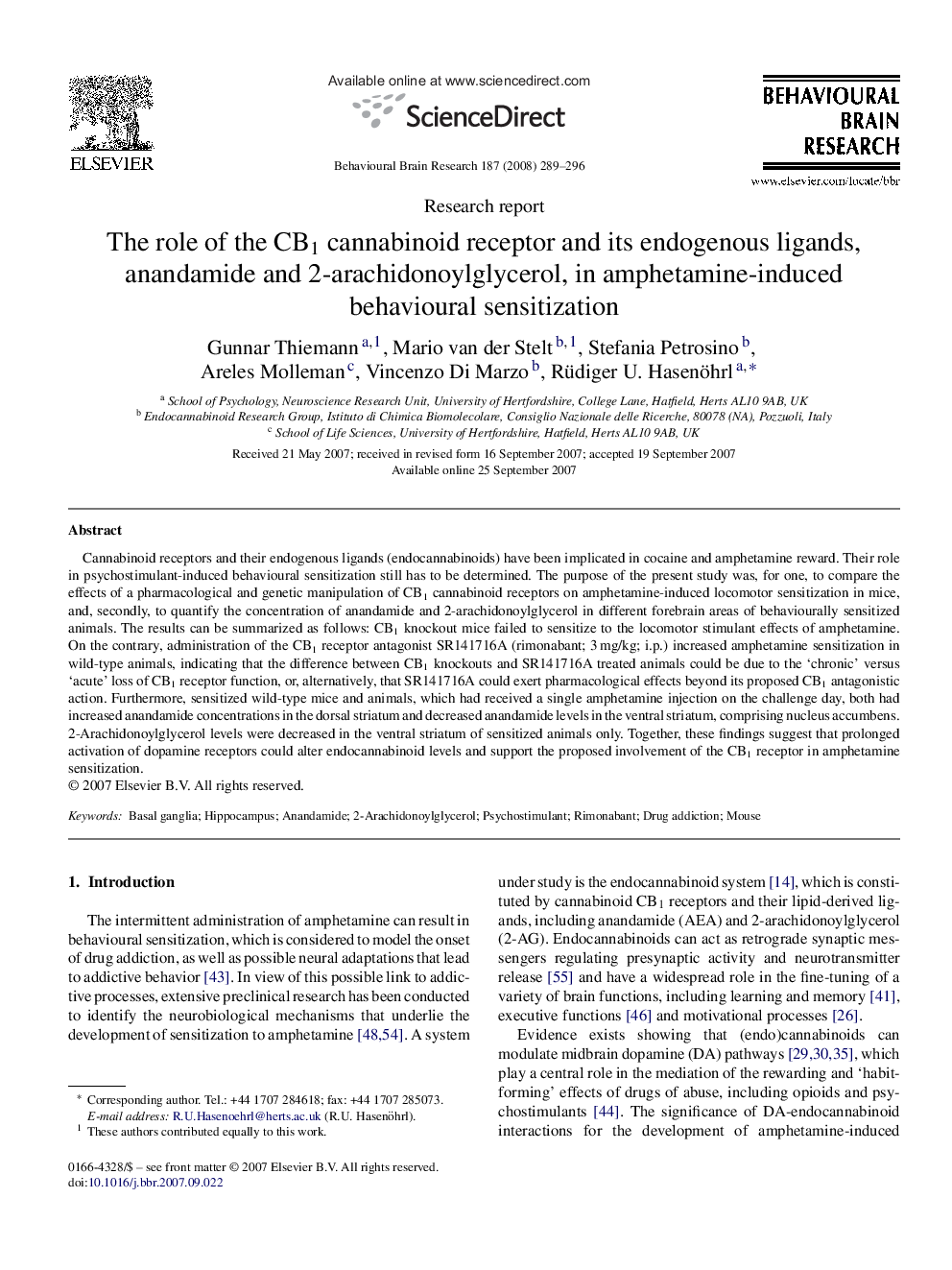| کد مقاله | کد نشریه | سال انتشار | مقاله انگلیسی | نسخه تمام متن |
|---|---|---|---|---|
| 4315522 | 1290083 | 2008 | 8 صفحه PDF | دانلود رایگان |

Cannabinoid receptors and their endogenous ligands (endocannabinoids) have been implicated in cocaine and amphetamine reward. Their role in psychostimulant-induced behavioural sensitization still has to be determined. The purpose of the present study was, for one, to compare the effects of a pharmacological and genetic manipulation of CB1 cannabinoid receptors on amphetamine-induced locomotor sensitization in mice, and, secondly, to quantify the concentration of anandamide and 2-arachidonoylglycerol in different forebrain areas of behaviourally sensitized animals. The results can be summarized as follows: CB1 knockout mice failed to sensitize to the locomotor stimulant effects of amphetamine. On the contrary, administration of the CB1 receptor antagonist SR141716A (rimonabant; 3 mg/kg; i.p.) increased amphetamine sensitization in wild-type animals, indicating that the difference between CB1 knockouts and SR141716A treated animals could be due to the ‘chronic’ versus ‘acute’ loss of CB1 receptor function, or, alternatively, that SR141716A could exert pharmacological effects beyond its proposed CB1 antagonistic action. Furthermore, sensitized wild-type mice and animals, which had received a single amphetamine injection on the challenge day, both had increased anandamide concentrations in the dorsal striatum and decreased anandamide levels in the ventral striatum, comprising nucleus accumbens. 2-Arachidonoylglycerol levels were decreased in the ventral striatum of sensitized animals only. Together, these findings suggest that prolonged activation of dopamine receptors could alter endocannabinoid levels and support the proposed involvement of the CB1 receptor in amphetamine sensitization.
Journal: Behavioural Brain Research - Volume 187, Issue 2, 5 March 2008, Pages 289–296